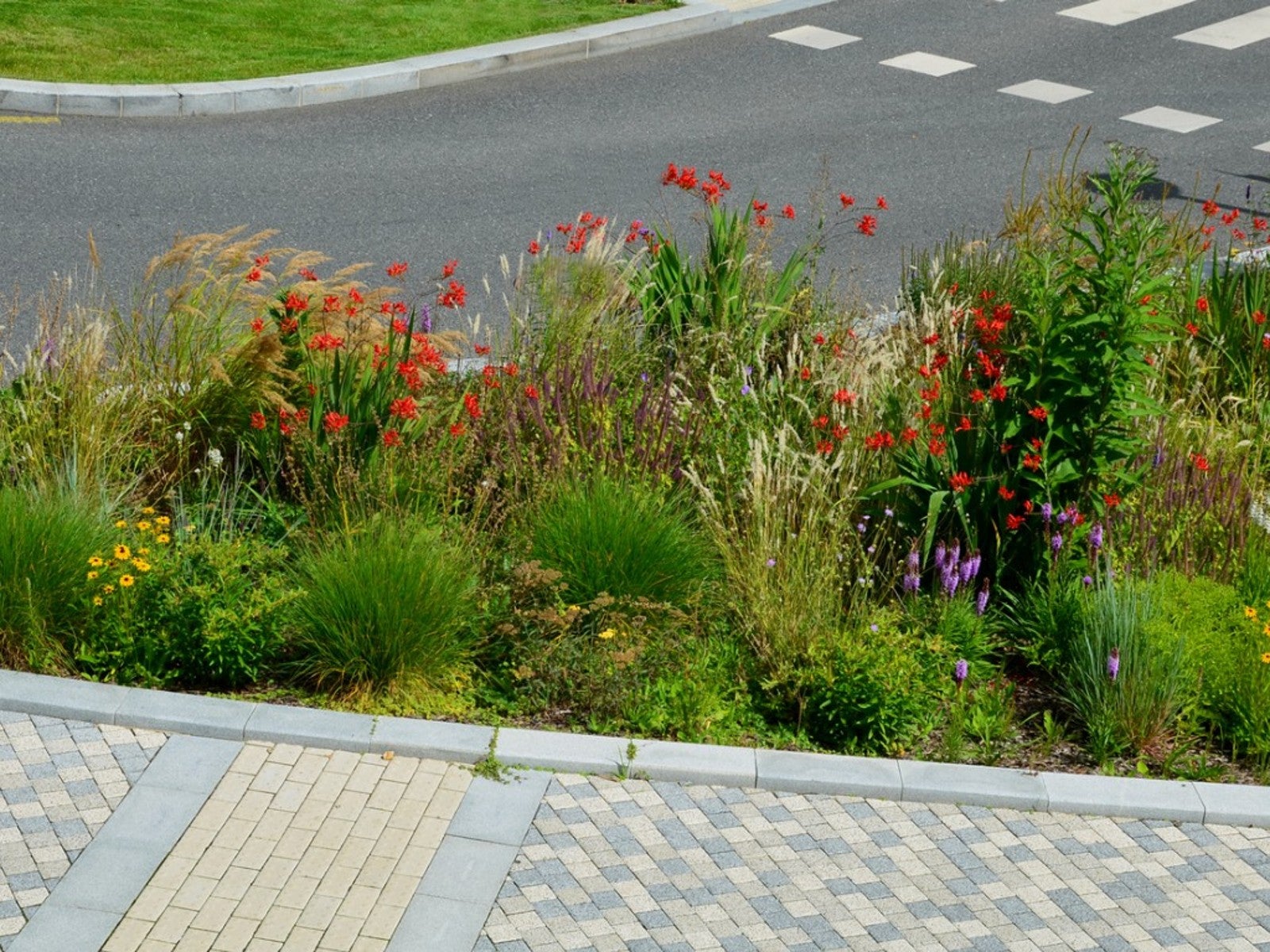Stormwater Planter Bioretention Systems


Preserving a natural water source's integrity and health is a priority in confronting pollution. A stormwater planter is a fairly easy way to redirect run-off and filter it before returning it to wild water sources. Storm water can contain chemicals and toxins that harm aquatic animals and the animals that rely on wild sources for drinking water. By using a stormwater planter design, the contaminated water is captured and cleansed before returning to the water supply.
What is a Bioretention System?
Rain gardens are an important part of channeling and managing rain water. A bioretention system or stormwater planter is an innovative way of not only holding that water but allowing it to be purified before it is allowed to return to ground water or piped to main wild water sources. A bioretention planter also adds lively appeal to landscaping when appropriate filtering plants are present.
A bioretention planter is a contained area with a flat bottom that is filled with plants. The run-off is collected in the area and the layers of mulch, soil, and plant roots, filter out impurities.
While rain gardens are considered bioretention systems, stormwater planters go a step further. Rain gardens do not have a physical barrier outside of soil, rock, or sod to contain the water. In a bioretention system, there is generally a concrete or cement box built that does not allow water to percolate through the sides. Instead, the water must seep through the layers at the bottom, which capture impurities. There may be an infiltration system where the cleansed water seeps into native soil, or a filtration system, where the water is piped to natural water sources.
Using Native Plants for Stormwater Management
There are a variety of plants that are suitable for stormwater planters, but native plants fit the bill in a unique way. Selecting wild, native plants provides options that are adapted to the region, requiring less special care.
Native aquatic and riparian plants thrive in moist conditions and often have broad root systems, useful for filtering the water. In addition, such specimens provide habitat and food for native birds and animals. These plants are as appealing as ornamental species, but increase biodiversity and native flora. Select plants with matching cultural requirements and those that require minimal upkeep.
A Basic Stormwater Planter
There are many guidelines and requirements for the optimal size of the planter, but most experts suggest at least an 18 inch (46 cm.) wide container.
Sign up for the Gardening Know How newsletter today and receive a free copy of our e-book "How to Grow Delicious Tomatoes".
The layered substrate is crucial to the removal of toxins. This needs to be installed at an 18 inch (46 cm.) depth, at minimum. The base is native soil, topped by rock, sand, and pea gravel. This is followed by compost amended soil, and topped with top soil. The retaining area for ponding at the top should be 6-12 inches (15-30 cm).
Finally plants can be installed. If the goal is to filtrate only, a storm drain discharge pipe must be installed to direct water out to its goal source. In infiltrated systems, the water will simply eventually mingle with the base native soil.

Bonnie Grant is a professional landscaper with a Certification in Urban Gardening. She has been gardening and writing for 15 years. A former professional chef, she has a passion for edible landscaping.